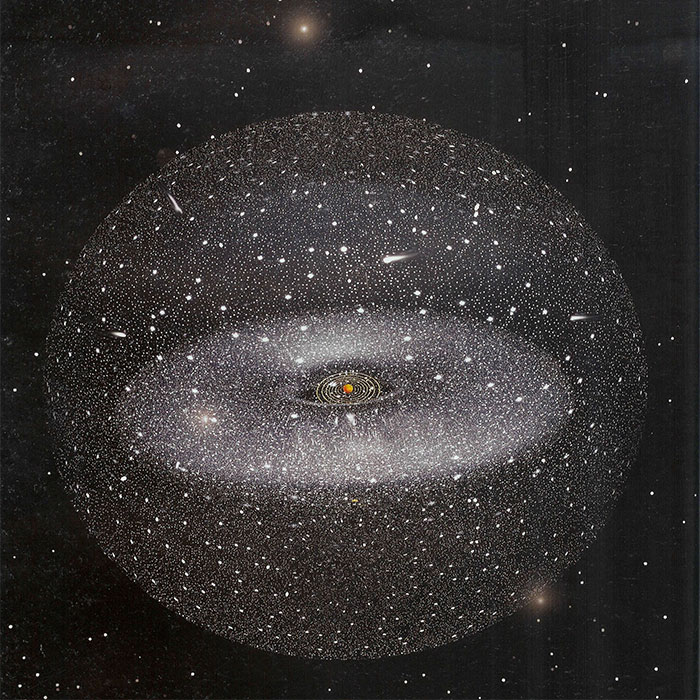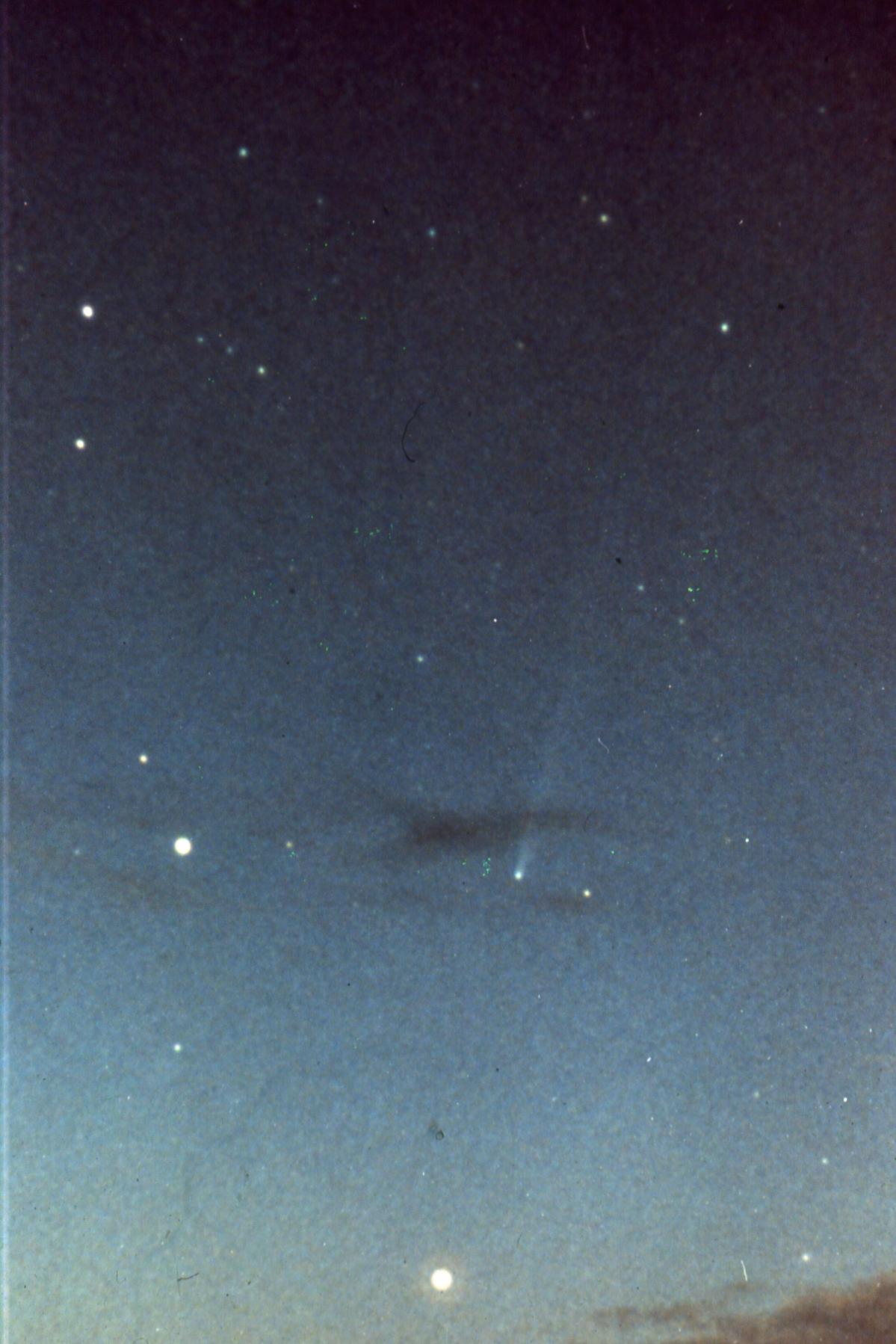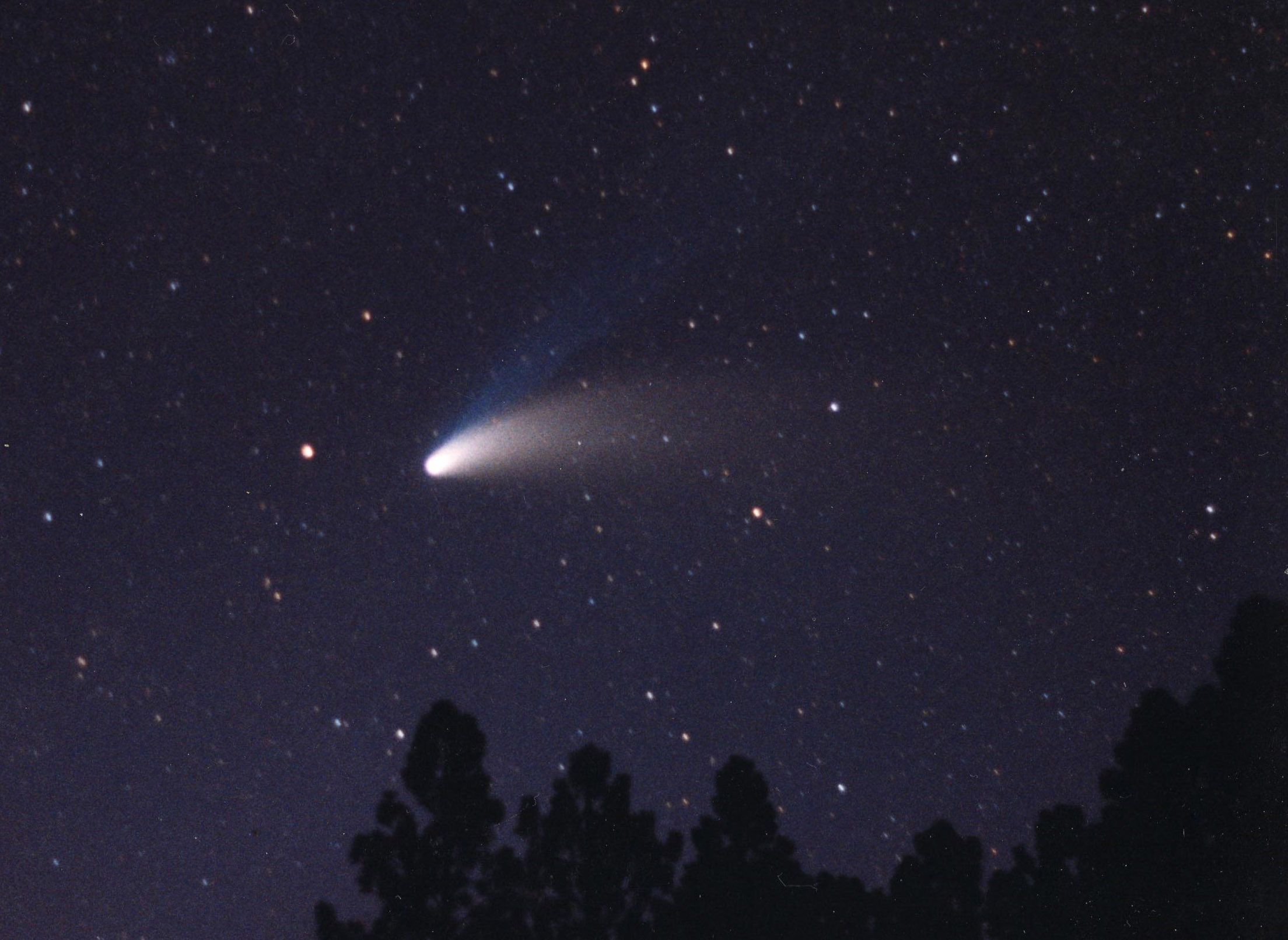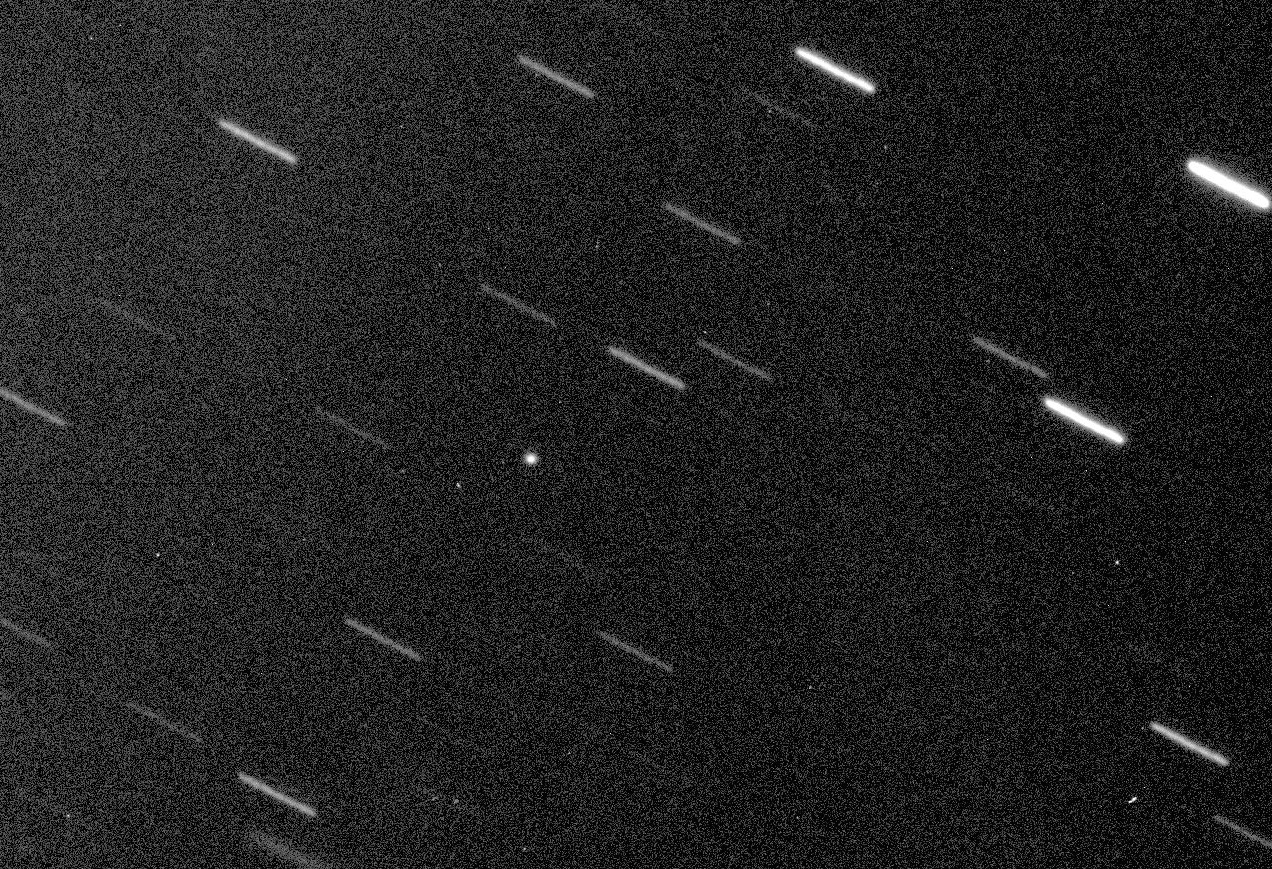

WEEK 3: JANUARY 12-18
TOPIC: THE OORT CLOUD
When examined from the standpoint of orbital characteristics, comets appear to come in one of two broad categories: short-period and long-period. Short-period comets, as this term implies, have relatively short orbital periods and often have been observed at numerous returns, while long-period comets, obviously, have long orbital periods and usually have only been observed once. The dividing line between these two is a matter of arbitrary definition, but typically 200 years has been the figure most often utilized when discussing cometary orbits.
In addition to their respective orbital periods, there are other differences between short-period and long-period comets, at least when examined as overall groups. (As in any population, there are individual exceptions from time to time.) One such difference involves the inclinations of their orbits: short-period comets, especially those with orbital periods of ten years or less, usually travel in low-inclination direct orbits, whereas the orbits of long-period comets come with just about any inclination – up to an including 90 degrees, i.e., perpendicular to the ecliptic – and are just as likely to be retrograde, i.e., traveling in the opposite direction from Earth (inclinations between 90 degrees and 180 degrees), as direct (inclination between 0 degrees and 90 degrees). Accordingly, unlike the short-period comets (as well as the planets and the asteroids), long-period comets can come from anywhere in the sky.
The origins of comets have long been an object of high interest. The origin of short-period comets will be the subject of a future “Special Topics” presentation, but as for long-period comets . . . As early as the 1930s the Estonian astronomer Ernst Opik hypothesized that there existed a large cloud of long-period comets in the far outer regions of the solar system. In the mid-20th Century a Dutch astronomer, Jan Oort, calculated the “original” orbits – i.e., the orbits before gravitational perturbations from any of the planets were encountered – of a large sample of long-period comets, and found that a significant percentage of them had their aphelia at distances of several tens of thousands of AU. From this, Oort concluded that a large spherical cloud of comets surrounds the solar system at these distances, and that this cloud supplies the solar system’s population of long-period comets. Oort published his findings in January 1950, and this population of comets has been referred to as the “Oort Cloud” ever since.
After a comet has been “kicked in” towards the sun, once it encounters the planets it will experience gravitational perturbations from them, especially from Jupiter if it is anywhere near. Depending upon the strength and direction of these perturbations, the comet's orbit will accordingly be changed; some comets will be placed into hyperbolic orbits and will be ejected from the solar system altogether. Comet Hale-Bopp, for example, was found to be arriving in an orbit with a period of somewhat over 4000 years, and thus could not have been making its first visit from the Oort Cloud; it is conceivable that its previous return was a first-time visit and it was then placed into its present orbit by a close approach to Jupiter at that time.

Detailed studies of various first-time visiting comets from the Oort Cloud suggest that, in the billions of years that they have spent in the “deep freeze” of near-interstellar space, their nuclei become covered by a thin “crust” of organic materials, likely produced by bombardment by cosmic rays. As the comet approaches the inner solar system on its first visit some of its more volatile substances may begin sublimating at relatively large heliocentric distances which in turn may suggest a rather high intrinsic brightness and thus a bright display if the perihelion distance is small enough, however once these volatiles are dispersed the comet’s activity may appear to begin to begin “shutting down” until this organic crust is broken by the warmer temperatures at smaller heliocentric distances. The result may be a disappointing display based upon the projections made from the comet’s initial appearance. Comet Kohoutek 1973f – which will be a future “Comet of the Week” – is a prime example of this; initially it was projected to be a potential “Comet of the Century,” but its actual performance, while still relatively decent, was far less spectacular than this and engendered widespread disappointment amongst the general public. One of the early signs that Comet Hale-Bopp might indeed put on a spectacular performance was the fact that it was found not to be a first-time visitor from the Oort Cloud.

 LONG-PERIOD COMETS: Left: Comet Kohoutek 1973f -- a first-time visitor from the Oort Cloud -- on January 7, 1974. Photograph courtesy Dennis di Cicco. Right: A photograph I took of Comet Hale-Bopp -- which was not a first-time visitor from the Oort Cloud -- on April 1, 1997.
LONG-PERIOD COMETS: Left: Comet Kohoutek 1973f -- a first-time visitor from the Oort Cloud -- on January 7, 1974. Photograph courtesy Dennis di Cicco. Right: A photograph I took of Comet Hale-Bopp -- which was not a first-time visitor from the Oort Cloud -- on April 1, 1997.
Various physical studies of long-period comets – including, certainly, Hale-Bopp – indicate that they were formed in the region of the solar system between Jupiter’s and Neptune’s present-day orbits. As these (and other planets) formed their gravitational perturbations would have “kicked out” the long-period comets into their present position in the Oort Cloud; they would have also “kicked in” other comets into the inner solar system, some to bombard Earth and the other forming inner planets and others to impact the sun, and they would have ejected other comets from the solar system. The entire process was certainly stochastic and non-uniform, and would accordingly explain why the Oort Cloud does not appear to have a homogenous, uniform structure. While the outer regions of the Oort Cloud – perhaps 20,000 to 50,000 AU – do appear to be spherical in structure, there is evidence that the inner regions – sometimes called the “Hills Cloud,” after astronomer Jack Hills who proposed its existence, and which would occupy the first few thousand AU of the Oort Cloud – are flatter and comprise more lower-inclination comets.

During the course of their respective travels around the Galaxy, the sun and various other stars will occasionally pass somewhat close to each other. If and when another star might pass through the Oort Cloud, its gravitational influences would likely “kick in” an unusually large number of comets into the inner solar system – producing a much larger number of comets appearing in Earth’s skies and also a much higher frequency of impacts from these “comet showers.” (Due to the travel times involved, these events would take place a few million years after the star’s passage through the Oort Cloud.) This subject, including discussions of specific stars that have either passed through the Oort Cloud during the – astronomically – recent past or will do so in the – astronomically – near future, will be discussed more thoroughly in a future “Special Topics” presentation.
A variation of this particular theme is provided by the hypothetical object dubbed “Nemesis.” In the mid-1980s some published paleontology research suggested that “mass extinctions” on Earth seemed to occur at approximately 26-million-year intervals, and some astronomers accordingly suggested that these could be due to a very distant companion of the sun that periodically passed through the Oort Cloud and sent large numbers of comets inward towards the inner solar system and Earth. Since it had not yet been detected, this so-called “Nemesis” could either be a very low-mass M-type star or perhaps a “brown dwarf” (a stellar object not massive enough to sustain nuclear fusion in its interior; no such objects were known at that time, although many have been discovered since then). More recent studies have cast doubt on the alleged 26-million-year periodicity of mass extinctions, and meanwhile – despite careful searches – no signs of any “Nemesis” have been detected, including in data taken by the Wide-field Infrared Survey Explorer (WISE) spacecraft during the early 2010s (although some nearby low-mass stars and brown dwarfs have been detected, and it is entirely conceivable that other such objects may be discovered in the future). At this time, “Nemesis” is no longer considered a viable hypothesis, although some very interesting objects have indeed been found in the outer solar system and will be discussed in a future “Special Topics” presentation.
“Special Topics” archive
Ice and Stone 2020 home page
Earthrise Institute home page